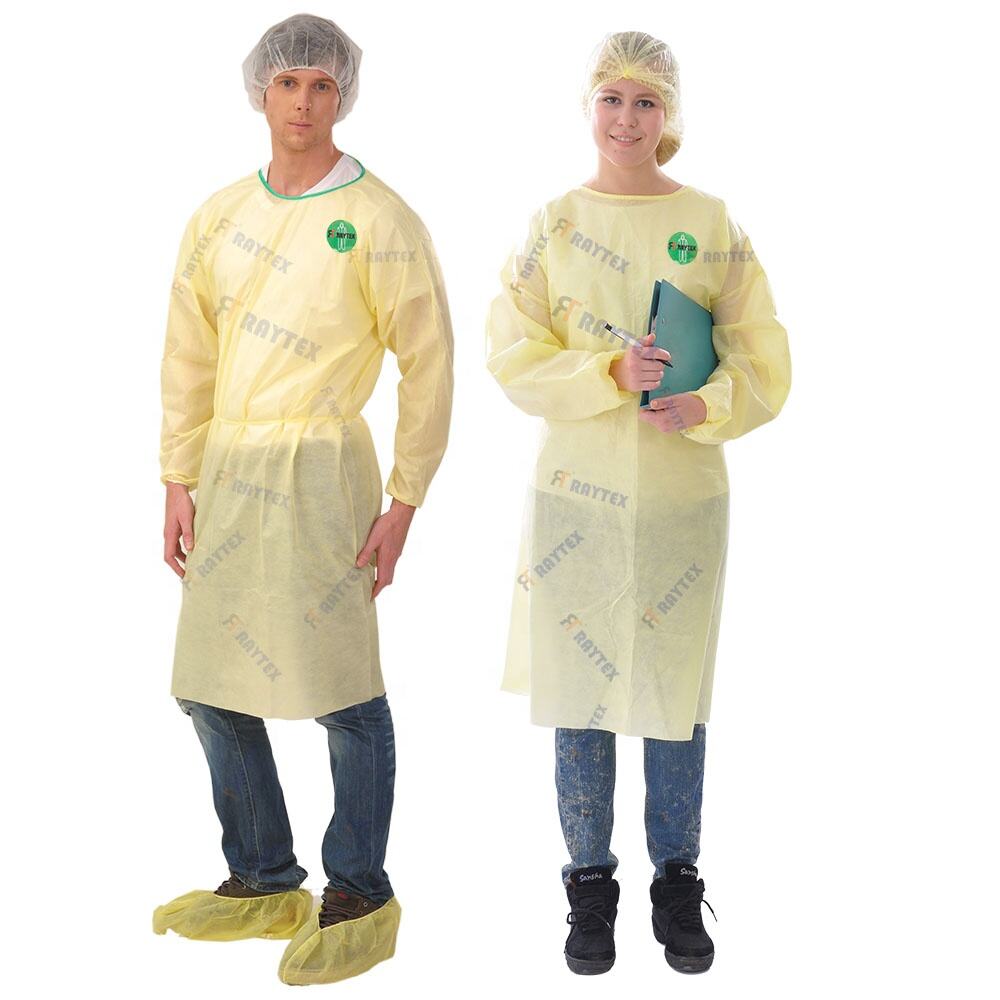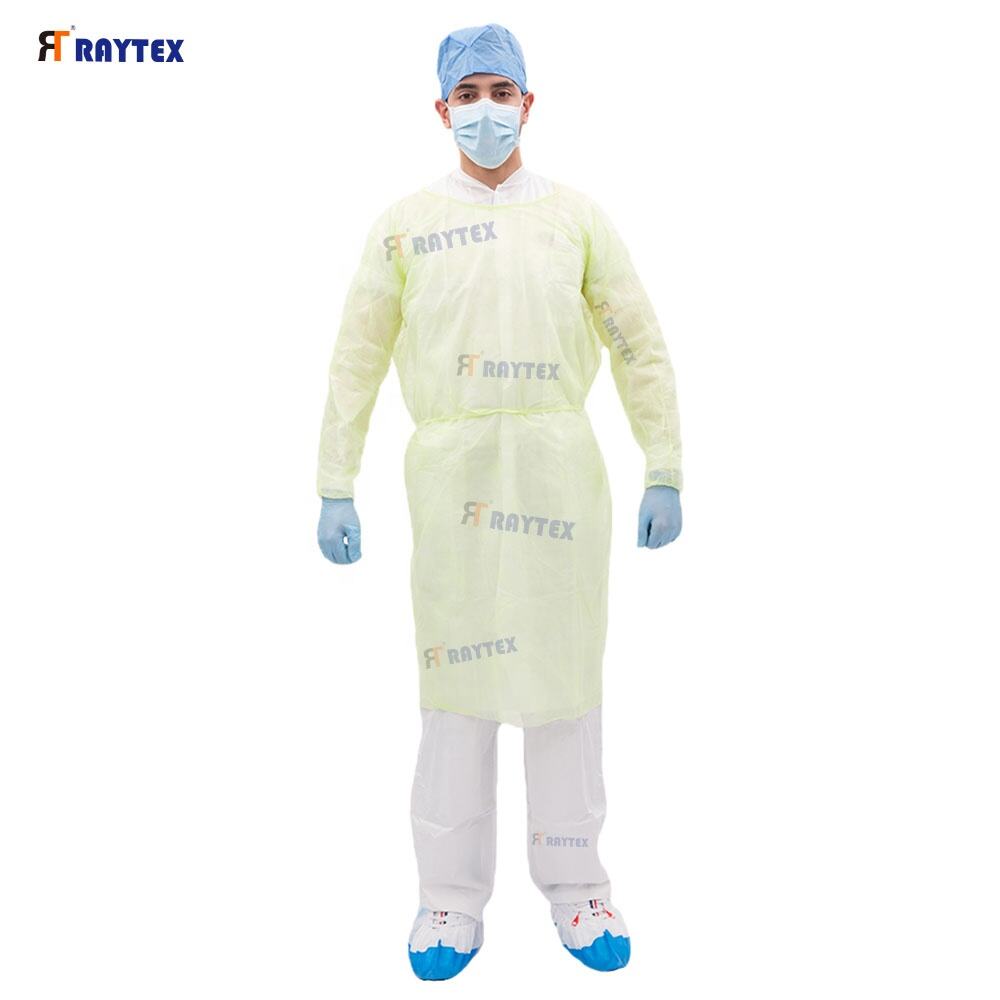Isolation gowns for multi-day use are durable, reusable protective garments designed to provide consistent barrier protection over multiple shifts or days, offering a cost-effective and sustainable alternative to disposable gowns in low-to-moderate risk environments. These gowns are engineered for repeated use, constructed from high-quality fabrics like cotton-polyester blends, nylon, or reinforced non-wovens that withstand frequent laundering and sanitization without compromising their protective properties. Key materials often include fabric treated with water-repellent coatings or woven with antimicrobial fibers to maintain liquid resistance and inhibit microbial growth even after multiple washes. The design balances durability and comfort, with features such as reinforced seams, double-stitched hems, and heavy-duty closures (like metal snaps or sturdy zippers) that resist wear from repeated donning and doffing. They typically offer full-length coverage with adjustable cuffs (elastic or Velcro) to ensure a secure fit across different body types, and many include pockets for storing tools or gloves—practical for healthcare settings, laboratories, or industrial facilities where workers need easy access to supplies. The fabric is chosen for breathability to prevent overheating during extended wear, a critical factor for user compliance with PPE protocols. Compliance with standards for reusable PPE is strict, with these gowns meeting EN 13795 (for surgical and isolation clothing) and ASTM D6319 (standard guide for care and maintenance of protective clothing), ensuring they retain barrier efficiency after at least 50 industrial launderings. They are tested for dimensional stability, colorfastness, and continued resistance to liquid penetration—properties that ensure consistent protection over time. Sanitization protocols often involve high-temperature washing (≥60°C) with industrial detergents and, in healthcare settings, may include autoclaving or chemical disinfection to kill pathogens between uses. Multi-day use gowns are particularly valuable in settings with stable PPE demand, such as long-term care facilities or manufacturing plants, where they reduce waste and lower procurement costs compared to disposable alternatives. They also support sustainability goals by minimizing plastic waste associated with single-use PPE. By combining durability with reliable protection, these gowns offer a practical solution for organizations seeking to balance safety, cost-efficiency, and environmental responsibility.


